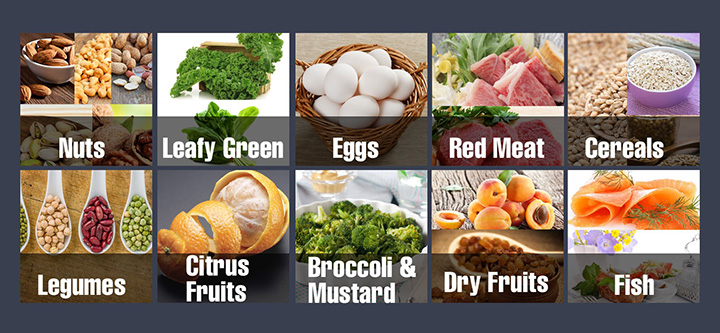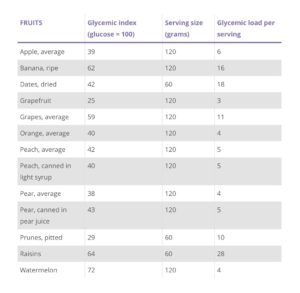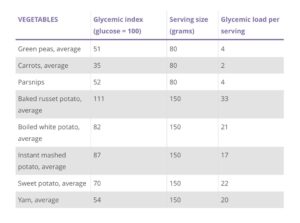Dr. K. A. Santhosh Selvam BSMS, MS(CT)
We Serve For Your Health
Diet
Jan
2019Mar
2018CAD protocol is a special diet schedule developed for the benefit of patients undergoing rejuvenation treatment, so it is not advised for general public.
Foods to avoid are as follows:
- Milk, Cream, Cheese and other milk products
- Brown sugar, molasses, caramels and maple syrup
- Artichoke, acorn, broccoli, spinach, kale, soy beans and cabbage
- peanut butter
- Ladies finger
- Almonds
- Oranges
- Sesame seeds
- Brazil nuts
- Celery
- Turnip and watercress
- Shrimp
- Crab
- Strawberry, blackberry and raspberry
- Olives, dates and apricots
Sep
2017| Food Item | Amount | Protein(g) | Calories (kcal) |
| EARLY MORNING | |||
| Fenugreek seeds with 1 cup of water | – | – | – |
| Tea (without sugar) | 1 cup | 4 | 35 |
| Marie Biscuits | 2 | 1 | 56 |
| Breakfast | |||
| Stuffed methi/palak /lauki paratha | 2 small | 7 | 200 |
| Curd | 50 gm (1 cup) | 3 | 30 |
| OR | |||
| Egg white / Paneer Bhurji | 1 medium bowl | 6 | 130 |
| Plain roti (no oil ) | 2 small | 3 | 150 |
| OR | |||
| Vegetable poha/upama/oats/daliya | 1 soup bowl | 4.5 | 230 |
| MID MORNING | |||
| Apple /guava/orange | 1 | – | 40 |
| LUNCH | |||
| Salad (10 mins before lunch) | 1 Medium bowl | 1 | 30 |
| Capsicum + gobhi veg | 1 medium bowl | 1 | 85 |
| Dal | 1 soup bowl | 6 | 130 |
| Phulka (no ghee) | 2 | 6 | 175 |
| EVENING | |||
| Milk / green tea / herbal tea / lemon water | 1 cup | 2 | 35 |
| Roasted chana + Muri | 1 cup | 5 | 85 |
| DINNER | |||
| Salad (10 mins before dinner) | |||
| Phulka (no ghee | 2 | 4.5 | 150 |
| Lauki veg | 1 cup | 2 | 85 |
| Curd | 1 cup | 3 | 30 |
| LATE NIGHT | |||
| Skim Milk (no sugar) | 1 glass | 4 | 120 |
| Total | – | 49.5 | 1286 |
Jul
2017There is a myth that diabetes patients should not eat fruits, which is absolutely wrong. Diabetes patients can consume fruits which are rich in fibre and contain low glycemic index. Glycemic index is number associated with a particular food which indicates the food’s effect on person’s blood glucose.
Usually juices should be avoided since they are robbed off of fibre hence might spike the blood glucose level. Fruits with high glycemic index should be consumed moderately and also not to be taken along with main course and to be taken in between as a snack.
POMEGRANATE
It is rich in antioxidants and helps body from free radicals and chronic diseases.

GRAPES
It helps in modulating blood glucose and improves immunity and promotes healthy skin.

APPLE
It is rich in fibre hence diabetics can consume without any hesitation.

BLUEBERRIES
The deep pigment in the fruit helps to reduce the risk of diabetes.

STRAWBERRY
It has low glycemic index and helps to improve immunity and fights cancer.

GUAVA
It is rich in dietary fibre and also with low glycemic index.

WATER MELON
It is rich in potassium which helps in proper functioning of kidney which in turn keep blood uric acid at lower limits.

CHERRIES
They are rich in antioxidant called anthocyanin which helps improves the function beta cells in pancreas and control blood sugar.

PAPAYA
It is also rich in antioxidants and protects heart and nerves from irregular sugar level.

ORANGE
Citrus fruits not only slows the glucose uptake but also inhibits the movement or transport of glucose through the intestines and liver.

APRICOTS
Four fresh apricots can provide more than 50% of daily vitamin A requirement.

PEARS
They are excellent source of fibre and vitamin k, and helps prevent constipation.

KIWI
They are good source of potassium, fibre and vitamin C.

INDIAN GOOSEBERRY
It is a very rich source of vitamin C and helps to protect the body from radicals.

REFERENCE
https://www.everydayhealth.com/type-2-diabetes/best-fruits-for-diabetes
http://food.ndtv.com/health/10-diabetic-friendly-fruits-to-help-you-manage-diabetes-better-1269733
Apr
2017ROLE OF PHOSPHOROUS IN KIDNEY DISEASE
SOME LOW PHOSPHOROUS FOOD
- Certain brands of nondairy creamers, rice milk (unenriched), soy milks
- Cream cheese, sour cream
- Soda-lemon-lime, grape, strawberry, cream soda, root beer, homemade iced tea, homemade lemonade, hot apple cider, cranberry juice
- Gelatin, Popsicles, sherbet, Sorbet
- Jellybeans, fondant, gumdrops, hard candy
- Unsalted popcorn or pretzels
- Sugar cookies, shortbread cookies, vanilla wafers, lemon cake, white or yellow cake, angel food cake
- Jam, jelly, honey, cream cheese
- Margarine, butter
- Corn or rice cereals, refined wheat cereals
- Cream of wheat, cream of rice, grits
- French, Italian or white bread
- White rice, pasta, couscous
- Fresh or frozen meat, fish and poultry (compared to processed)
- Fruits such as apples, berries, grapes, plums, pineapple, canned pears, peaches, fruit cocktail
- Vegetables such as green beans, cabbage, carrots, cauliflower, eggplant, summer squash, bell pepper, cucumber, lettuce, onion, radish.
SOME HIGH PHOSPHOROUS FOODS
- Milk
- Cheese
- Yogurt
- Ice cream
- Beer, cola, milk-based coffee, chocolate drinks
- Chocolate
- Bran
- Brown rice, wild rice
- Whole grain breads, cereals, crackers
- Corn tortillas
- Pancakes, waffles, biscuits
- Pizza
- Avocado
- Nuts, seeds, nut butters
- Dried beans and peas
- Corn, peas
- Processed meats such as hot dogs, sausage, turkey sausage, bologna
- Organ meats
- Sardines
LOW PHOSPHOROUS FOOD TIPS
- Instead of milk,use substitutes like non-dairy creamers, rice milk (unenriched) or soy milk. Because some non-dairy creamers and soy milks are high in phosphorus, check with a renal dietitian for a list of acceptable brand name products.
- Instead of cheese, use cream cheese or sour cream.
- Instead of cola or Dr. Pepper® have cream soda, lemon-lime soda, grape soda, homemade lemonade, homemade iced tea or root beer.
- Instead of ice cream have gelatin, Popsicles®, sherbet or sorbet (remember to count as fluid).
- Instead of chocolate or nuts have jellybeans, fondant, gumdrops, hard candy, unsalted popcorn or unsalted pretzels.
- Instead of chocolate cookies or cake have sugar cookies, shortbread cookies, vanilla wafers or vanilla, lemon or angel food cake.
- Instead of hot chocolate or cocoa have hot apple cider or hot spiced cranberry juice.
- Instead of bran, oat or whole wheat cereals use cereals made from corn, refined wheat or rice.
- Instead of whole grain breads use French, Italian or white bread.
- Instead of peanut butter use jam, jelly, honey, cream cheese margarine or butter.
- Instead of dried beans or peas have green beans or wax beans.
- Instead of brown rice or wild rice use white rice, pasta, macaroni, grits or couscous seasoned with margarine and herbs.
- Instead of processed meats, fish and poultry use fresh or fresh frozen items.
ROLE OF POTASSIUM IN KIDNEY DISEASE
https://www.davita.com/kidney-disease/overview/the-basics/what-to-eat-when-you-have-kidney-disease/e/4665
Apr
2017
Red bell peppers
Red bell peppers are low in potassium and high in flavor, but that’s not the only reason they’re perfect for the kidney diet. These tasty vegetables are also an excellent source of vitamin C and vitamin A, as well as vitamin B6, folic acid and fiber. Red bell peppers are good for you because they contain lycopene, an antioxidant that protects against certain cancers.
Cabbage
High in vitamin K, vitamin C and fiber, cabbage is also a good source of vitamin B6 and folic acid. Low in potassium and low in cost, it’s an affordable addition to the kidney diet.
Cauliflower
Another cruciferous vegetable, cauliflower is high in vitamin C and a good source of folate and fiber. It’s also packed full of indoles, glucosinolates and thiocyanates—compounds that help the liver neutralize toxic substances that could damage cell membranes and DNA.
Garlic
Garlic helps prevent plaque from forming on your teeth, lowers cholesterol and reduces inflammation. Garlic provides a delicious flavor and garlic powder is a great substitute for garlic salt in the dialysis diet.
Onions
Onion contains sulfur compounds which give it its pungent smell. But in addition to making some people cry, onions are also rich in flavonoids, especially quercetin, a powerful antioxidant that works to reduce heart disease and protects against many cancers. Onions are low in potassium and a good source of chromium, a mineral that helps with carbohydrate, fat and protein metabolism.
Apples
Apples have been known to reduce cholesterol, prevent constipation, protect against heart disease and reduce the risk of cancer. It is high in fiber and anti-inflammatory compounds.
Cranberries
These tangy, tasty berries are known to protect against bladder infections by preventing bacteria from sticking to the bladder wall. In a similar way, cranberries also protect the stomach from ulcer-causing bacteria and protect the lining of the gastrointestinal (GI) tract, promoting GI health. Cranberries have also been shown to protect against cancer and heart disease.
Blueberries
Blueberries are high in antioxidant phytonutrients called anthocyanidins, which give them their blue color, and they are bursting with natural compounds that reduce inflammation. Blueberries are a good source of vitamin C; manganese, a compound that keeps your bones healthy; and fiber. They may also help protect the brain from some of the effects of aging. Antioxidants in blueberries and other berries have been shown to help slow bone breakdown in rats made to be low in estrogen.
Raspberries
Raspberries contain a phytonutrient called ellagic acid which helps neutralize free radicals in the body to prevent cell damage. They also contain flavonoids called anthocyanins, antioxidants which give them their red color. An excellent source of manganese, vitamin C, fiber and folate, a B vitamin, raspberries may have properties that inhibit cancer cell growth and tumor formation.
Strawberries
Strawberries are rich in two types of phenols: anthocyanins and ellagitannins. Anthocyananins are what give strawberries their red color and are powerful antioxidants that help protect body cell structures and prevent oxidative damage. Strawberries are an excellent source of vitamin C and manganese and a very good source of fiber. They are known to provide heart protection, as well as anti-cancer and anti-inflammatory components.
Cherries
Cherries have been shown to reduce inflammation when eaten daily. They are also packed with antioxidants and phytochemicals that protect the heart.
Red grapes
Red grapes contain several flavonoids that give them their reddish color. Flavonoids help protect against heart disease by preventing oxidation and reducing the formation of blood clots. Resveratrol, a flavonoid found in grapes, may also stimulate production of nitric oxide which helps relax muscle cells in the blood vessels to increase blood flow. These flavonoids also provide protection against cancer and prevent inflammation.
Egg whites
Egg whites are pure protein and provide the highest quality of protein with all the essential amino acids. For the kidney diet, egg whites provide protein with less phosphorus than other protein sources such as egg yolk or meats.
Fish
Fish provides high-quality protein and contains anti-inflammatory fats called omega-3s. The healthy fats in fish can help fight diseases such as heart disease and cancer. Omega-3s also help lower low-density lipoprotein or LDL cholesterol, which is bad cholesterol, and raise high-density lipoprotein or HDL cholesterol, which is good cholesterol.
Olive oil
Olive oil is a great source of oleic acid, an anti-inflammatory fatty acid. The monounsaturated fat in olive oil protects against oxidation. Olive oil is rich in polyphenols and antioxidant compounds that prevent inflammation and oxidation.
Studies show that populations that use large amounts of olive oil instead of other oils have lower rates of heart disease and cancer.
Buy virgin or extra virgin olive oil because they are higher in antioxidants. Use olive oil to make salad dressing, in cooking, for dipping bread or for marinating vegetables.
Reference:
https://www.davita.com/kidney-disease/diet-and-nutrition/lifestyle/top-15-healthy-foods-for-people-with-kidney-disease/e/5347
May
2016According to the Center for Disease Control and Prevention the most common deficiency prevailing among children and pregnant woman is the Iron deficiency. Women between age group 19 to 50 should be consuming about 18 mg of iron per day and 27 mg if they are pregnant. Men on an average require about 8 mg of iron per day.
Fruits and vegetables rich in iron content are as follows:
Green leafy vegetables like spinach, beet-root, pomegranate, dates, dry grapes, dry fruits like almond, sesame butter, dried apricots and others.
May
2016Therefore it is always advisable to take low GI foods so that it does not increase the blood glucose levels rapidly. By eating high GI foods it will raise blood sugar level significantly, thereby gives a higher post-meal blood glucose value.
LOW GI FOODS : have a GI of 55 or less
MEDIUM GI FOODS : between 56 to 69
HIGH GI FOODS: 70 or higher
Reference:
http://www.healthline.com/health/type-2-diabetes/fruits-vegetables
May
2016JACK FRUIT
Jack fruit contains vitamin A, vitamin C,thiamine, riboflavin, niacin, calcium, potassium, iron, manganese and magnesium among many other nutrients. It has been found to improve insulin resistance in diabetes patients.
POMEGRANATE
Pomegranate has been found to improve blood sugar statistics in diabetics people.
WATERMELON
Although watermelons have hive GI values, their glycemic index is low, making them good fruits for people with diabetes. However it should be consumed in moderate level.
ORANGES
Oranges can be consumed on daily basis by diabetics as they are rich in vitamin c.
STRAWBERRIES
One serving of strawberry can satisfy the daily requirement of vitamin C. In a recent study people who ate strawberries along with white bread required less insulin to control blood sugar compared to people who ate white bread alone.
PAPAYA
Papaya are good for diabetics as they are rich in vitamin and other minerals.
PINEAPPLE
Pineapples possess antiviral, anti-inflammatory and anti-bacterial properties and good for diabetics.
GUAVA
Guava controls diabetes and it is good for constipation. Guavas are high in vitamin A and vitamin C and contain high amounts of dietary fiber. This fruit has a reasonably low GI.
STARFRUIT
Starfruits help to reduce blood glucose level but caution needs to be exercised in case the person has diabetes nephropathy.
BLACK JAMUN
This is one of the best fruit for diabetics. It is known to control blood sugar. Various clinical and preclinical studies have been conducted demonstrating anti-hyperglycemic activity of jamun seeds.
SOURCE:
http://www.webmd.com/diabetes/features/fruit-and-diabetes
http://timesofindia.indiatimes.com/life-style/photo-stories/health-fitness/Top-10-fruits-for-diabetics/photostory/35993929.cms
http://www.healthline.com/health/type-2-diabetes/fruits-vegetables
















